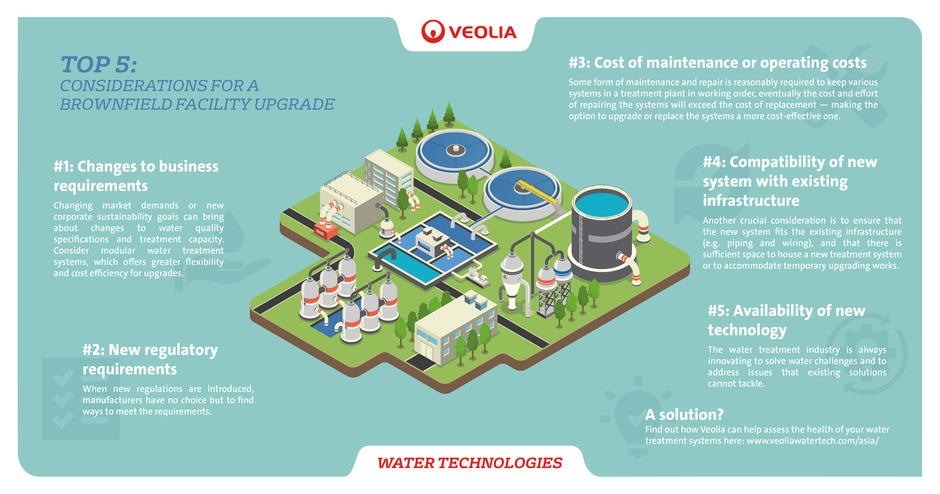
Managing a brownfield facility often comes with many challenges, including issues with aging plant components and having to adapt to new regulatory requirements. How does one decide if a brownfield water or wastewater treatment plant is due for an upgrade? It is important to assess the plant’s current process performance against the desired outcomes or required standards before deciding if the business should modify, update, or upgrade existing treatment processes.
Here are the top five considerations for managers evaluating an upgrade for their brownfield water or wastewater treatment plant:
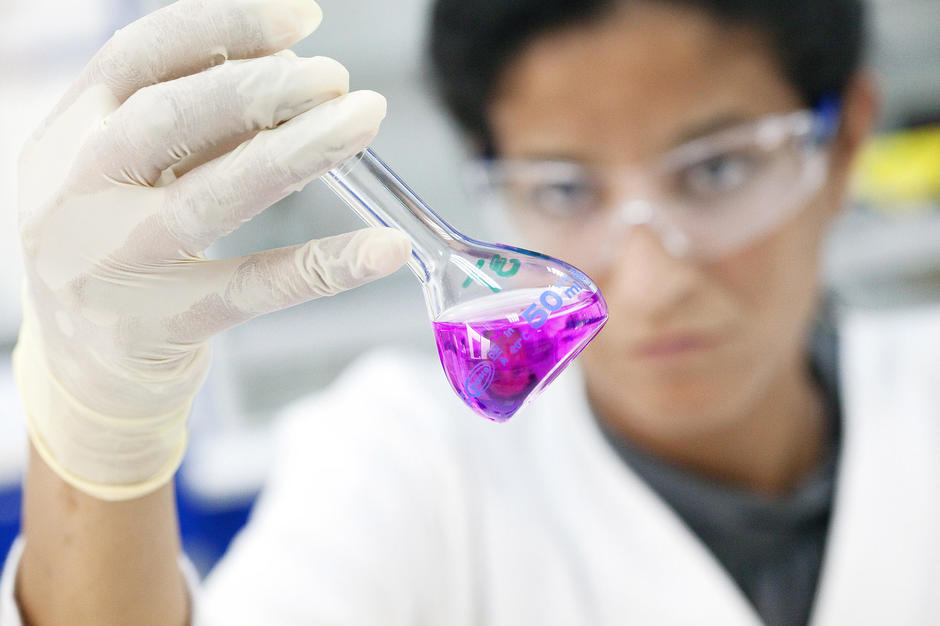
#1: Changes to Business Requirements
In today’s competitive business environment, manufacturers often grapple to meet new requirements due to changing market demands or new corporate sustainability goals. Both scenarios can bring about changes to water quality specifications and treatment capacity, which makes alterations to existing treatment systems unavoidable. It is then imperative for businesses to carefully examine how their business goals can be met through the selection of a suitable water treatment system.
Businesses that are looking to streamline production processes can consider modular water treatment systems, which allow additional treatment units to be added or removed from a system quickly and efficiently, depending on their requirements. This ability to scale a system up and down also offers greater flexibility and cost efficiency for upgrades. Some treatment systems can also support digital monitoring, where plants can be monitored and optimized remotely round-the-clock, and allow businesses to achieve operational efficiency and quality compliance seamlessly.
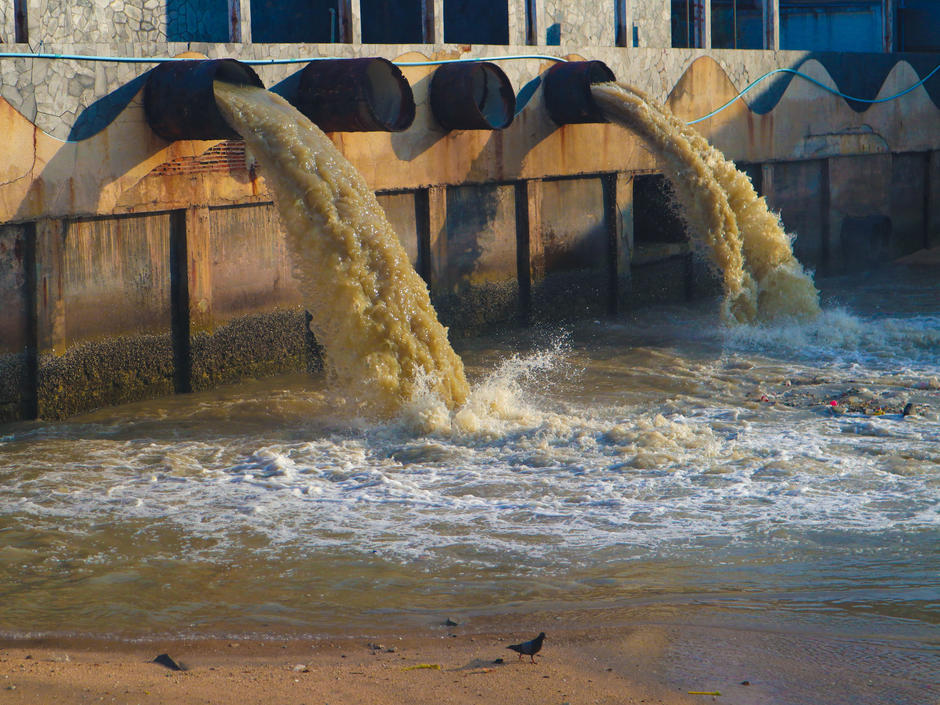
#2: New Regulatory Requirements
One of the areas that businesses have no control over is the regulations meted out by the authorities. When new regulations are introduced, manufacturers have no choice but to find ways to meet the requirements. In China, for example, the government implemented strict effluent discharge standards to meet its 2020 targets for the prevention and control of water pollution. Manufacturers affected by this change must then look into upgrading their existing systems, which may not be able to comply with the demanding regulatory requirements.
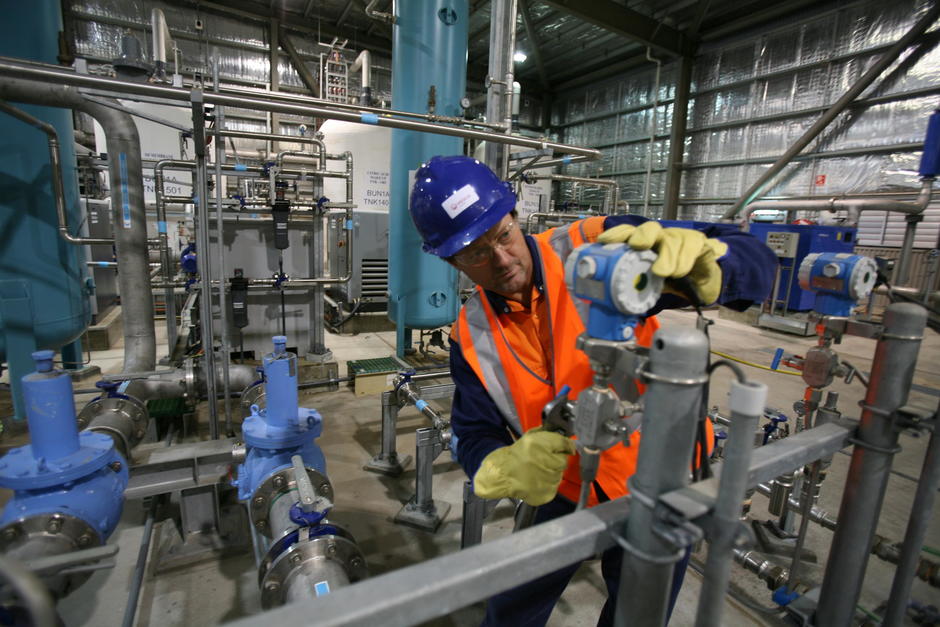
#3: Cost of Maintenance or Operating Costs
As opposed to regular planned upgrades or replacements, waiting to replace a piece of equipment only when it exhausts its life span tends to be costlier because of how maintenance and repairs increase towards the end. While some form of maintenance and repair is reasonably required to keep various systems in a treatment plant in working order, eventually the cost and effort of repairing the systems will exceed the cost of replacement — making the option to upgrade or replace the systems a more cost-effective one.
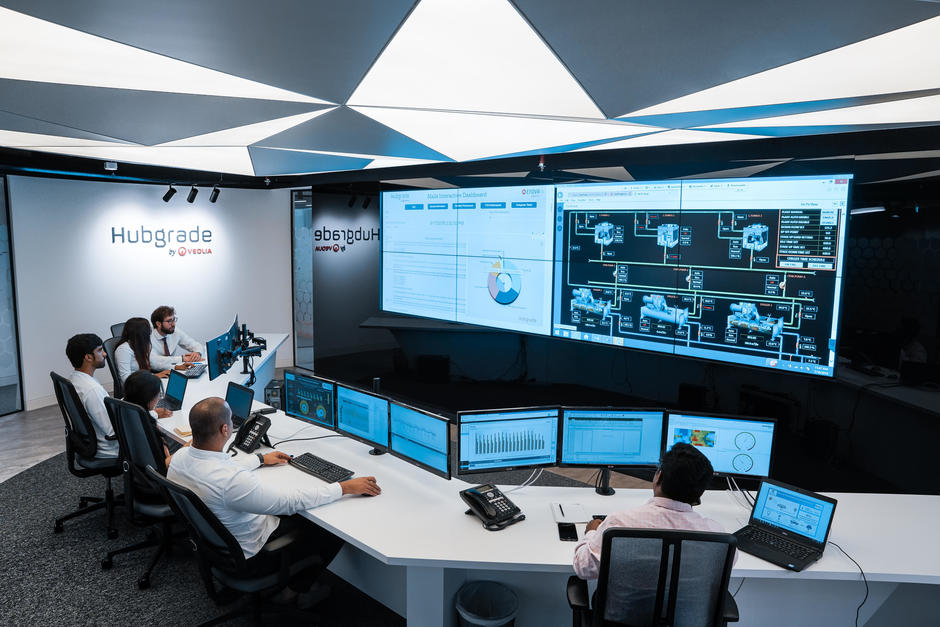
#4: Compatibility of New System With Existing Infrastructure
Another crucial consideration is to ensure that the new system fits the existing infrastructure (e.g. piping and wiring), and that there is sufficient space to house a new treatment system or to accommodate temporary upgrading works. Businesses can opt for different types of solutions to work around existing constraints. For instance, plants that are tight on space can consider compact, plug-and-play solutions, which will help maximise the small footprint available.
#5: Availability of New Technology
The water treatment industry is always innovating to solve water challenges and to address issues that existing solutions cannot tackle. Such solutions offer businesses an avenue to modify or update current systems to meet their production needs more effectively and can lead to increased productivity or cost-savings in the long-term.

